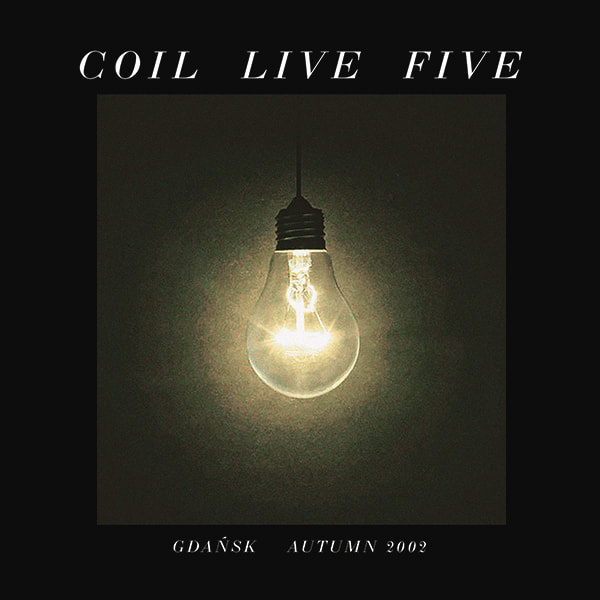- Administrator
- Albums and Singles
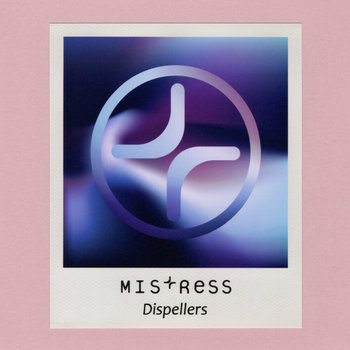
Sound In Silence is happy to announce the addition of MIS+RESS to its roster of artists, presenting his new album entitled Dispellers.
MIS+RESS is the ambient solo project of Brian Wenckebach, based in New Jersey, USA. He is also known as one half of electronica/shoegaze duo Elika, experimental/electronica duo Thee Koukouvaya and lately as member of Measured, a new collaboration project along with Evagelia Maravelias, the other half of Elika, and electronic producer and latter-day Tangerine Dream member, Ulrich Schnauss. To date MIS+RESS has released an album on Somewherecold Records in 2017 and a self-released EP in 2018.
Dispellers is Wenckebach’s second release on Sound In Silence after the, already sold out, mini album Witches’ Jelly by Thee Koukouvaya, his other project along with John O’Hara, back in 2015.
Dispellers is a gorgeous collection of eight calming compositions, centered on ambient atmospheres and dreamy soundscapes. Utilizing mesmerizing melodies and blissful layers of delayed guitars, loops of ethereal textures, heavily processed with reverb and a variety of other effect pedals, Wenckebach creates one of his finest works to date. Dispellers is a wonderful album of nostalgic and emotional content, highly recommended for devotees of Michael Brook, Daniel Lanois, The Durutti Column and July Skies.
More information can be found here.
Read More
- Administrator
- Albums and Singles

Sound In Silence is proud to welcome Western Edges to its family, presenting his debut album Prowess.
Western Edges is the new ambient/electronic solo project of Richard Adams, founder member, alongside his brother Chris, of the legendary Leeds band Hood. Since Hood went on hiatus in 2005, Richard Adams has recorded his music under the moniker of The Declining Winter, either solo or with help of friends such as Martin Cummings (Northerner), Paul Elam (Fieldhead), Mick Harrison (Prolapse, National Screen Service), James Yates (Seamajestea), Barrie Cummings, Joanne Ellis and many others, having released several sublime albums, EPs and singles on labels such as Home Assembly Music, Rusted Rail, Monopsone, Mobeer and Rural Colours, amongst others. He is also member of several other projects such as Memory Drawings, Great Panoptique Winter and Northern Exchange, along with friends such as Joel Hanson (Judgement Of Paris), Sarah Kemp (Brave Timbers, Last Harbour), Gareth S Brown (Hood), Chris Cole (Manyfingers, Movietone), Jason Sweeney (Panoptique Electrical) and others.
Prowess is Adams’ third release on Sound In Silence after two highly acclaimed albums in 2015, Wildness by Great Panoptique Winter and Endless Scenery by The Declining Winter.
Prowess is made up of eight electronic tracks, of blissful ambience and shimmering electronics. These tracks were made to soundtrack the feelings Richard Adams had about the area where he lives in Saltaire, West Yorkshire and the Aire valley, while each one was inspired by a different photograph of the area. Adams skillfully blends together elements of soothing ambient, lo-fi electronica and minimal techno, creating an impressive album full of warm soundscapes, ethereal textures, washes of lush pads, drifting synth layers, hypnotic drones, deep bass lines and minimal beats.
Expertly mastered by George Mastrokostas (aka Absent Without Leave), Prowess is a delicate album which appeals to all fans of beatless Boards Of Canada, Aphex Twin, bvdub and late-period Hood.
More information can be found here.
Read More
- Administrator
- Albums and Singles
COIL LIVE FIVE (Pre-order at thighpaulsandra.co.uk)
Recorded live at St. John's Church, Gdansk on Oct 25th 2002.
- I Am Angie Bowie (Sine Waves)
- The Last Rites Of Spring
- 'Hammersmith' Deceivers
- A Warning From The Sun
- The Universe Is A Haunted House
- Ostia (The Death Of Pasolini)
- I Don't Want To Be The One
- Bang Bang (My Baby Shot Me Down)
- Are You Shivering?
Mixed in 2019 from the original multitrack recordings, this exclusive release is available only from Thighpaulsandra.co.uk.
IMPORTANT: The original limited edition has sold out, but due to high demand we are offering a regular edition of this release, which does not contain either the stickers or the signed certificate. This is a pre-order; these are expected to ship from the end of April 2019. Strictly one copy per customer (although it is indeed possible to add multiples of this item to your cart, any additional purchases will be refunded).
Read More
- Administrator
- Albums and Singles
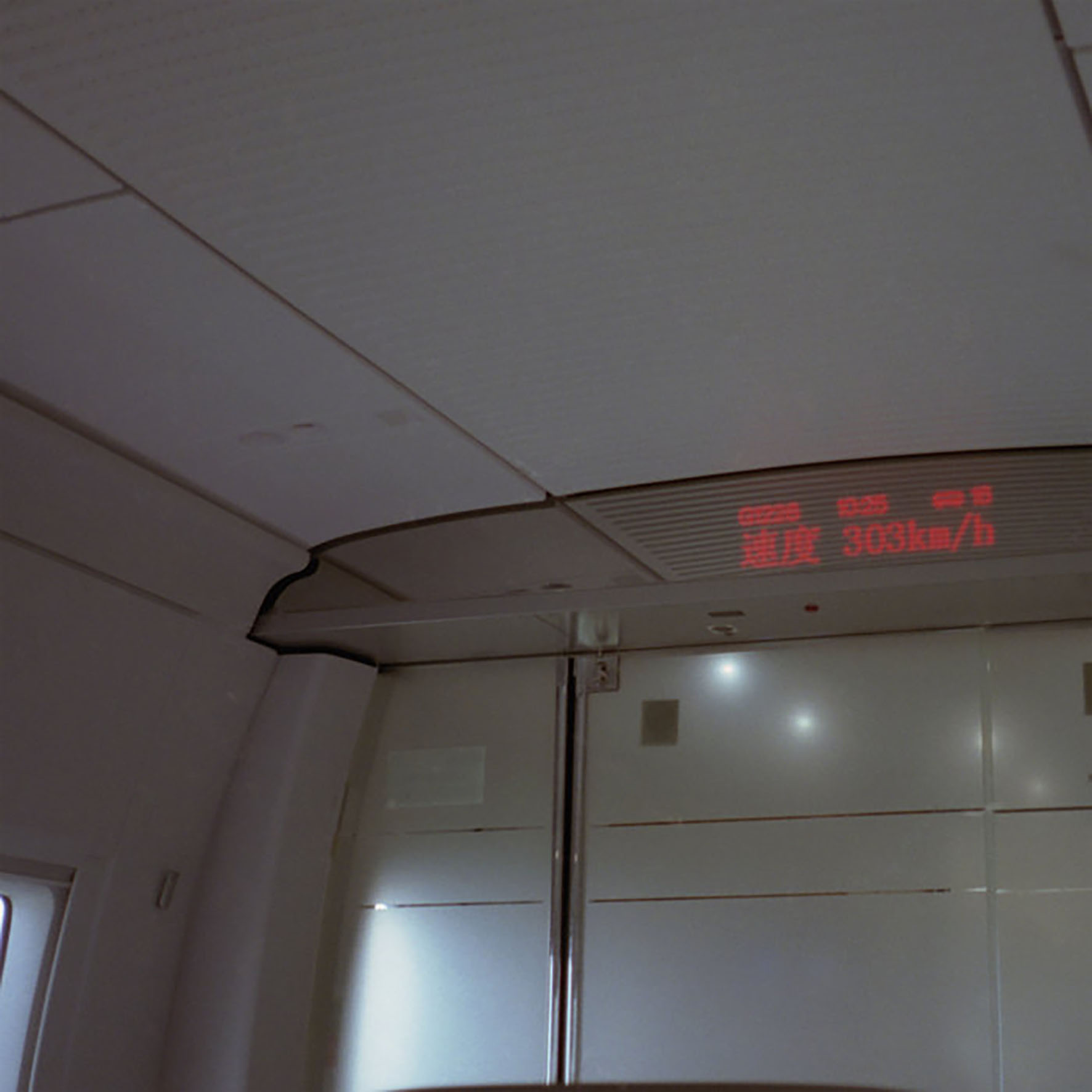 It would be great if there was some simple way for casual Celer fans like myself to easily distinguish Will Long's major statements from the ceaseless flow of minor releases, but there seem to be glaring exceptions to every system that I have attempted to devise. In the case of Xièxie, however, Long helpfully took the guesswork out of the matter, as this might be the most heavily promoted album that he has ever released. Happily, his instincts have proven to be well-founded, as Xièxie definitely ranks among the upper tier of his overwhelming oeuvre. I would probably stop short of calling it a start-to-finish masterpiece or my personal favorite Celer album, but I would be hard-pressed to think of anyone else churning out ambient/drone music as enveloping and sublimely lovely as Xièxie's bookends.
It would be great if there was some simple way for casual Celer fans like myself to easily distinguish Will Long's major statements from the ceaseless flow of minor releases, but there seem to be glaring exceptions to every system that I have attempted to devise. In the case of Xièxie, however, Long helpfully took the guesswork out of the matter, as this might be the most heavily promoted album that he has ever released. Happily, his instincts have proven to be well-founded, as Xièxie definitely ranks among the upper tier of his overwhelming oeuvre. I would probably stop short of calling it a start-to-finish masterpiece or my personal favorite Celer album, but I would be hard-pressed to think of anyone else churning out ambient/drone music as enveloping and sublimely lovely as Xièxie's bookends.
It is admittedly a bit redundant to mention that Xièxie ("thank you") is an album inspired by bittersweetly beautiful memories of a specific time and place, as transforming lingering memory fragments into lush, soft-focus dreamscapes has been Will Long’s stock-in-trade since Celer's very beginnings.However, I definitely appreciate the poetic reminiscence that Long wrote as an album description.For one, it establishes a lovely and evocative context: two lovers once took a train trip from Shanghai to Hangzhou, a period that is now distilled to a series of flickering images of neon lights, rain, birds, and blurred scenery seen through the window of a speeding train.Moreover, that literary component is vital to understanding and appreciating the full scope and depth of this project: without it, it is very easy to view Celer's oeuvre as a vast ocean of similar-sounding releases.To be sure, Long is quite good at what he does, so even a run-of-the-mill Celer album can be enjoyable, but there are a lot of relatively interchangeable albums for every landmark release.One could argue that the latter is only possible through Long's seemingly obsessive work ethic, but one could also argue that those less exceptional moments could have simply been kept in the vault rather than released.However, that would undercut the larger vision (or at least what I imagine that vision to be): Celer is like a vast impressionist diary or novel unfolding in real-time.Some chapters are certainly more vivid and memorable than others, but they are all integral parts of the whole's gradually unfolding arc.
Much like the work of William Basinski, most Celer albums religiously adhere to a distinctive template of simple loops repeated into infinity–the biggest difference between the two artists is primarily one of scale, as Long traffics in a kind of slow-motion, widescreen grandeur.In that respect, Xièxie is textbook Celer, as each piece is an elegiac procession of dreamlike, billowing chords that beautifully approximates massive clouds lazily rolling across a vast horizon.The tone is almost always one of sublime melancholy, but Long has proven himself to be a master at articulating different shades of that narrow emotional range by deftly manipulating lightness and density.The midsection of Xièxie is populated with one lengthy and archetypal variation of that aesthetic after another, though they are interspersed with brief interludes of field recordings made during the trip.Each substantial piece meets Celer's usual high standard of quality, but the subtle divergences from the formula that open and close the album stand out as the most compelling and distinctive pieces.In the case of the opening "Rains Lit By Neon," Long simply allows the field recordings and his music to bleed together so that his heavenly chord swells slowly fade into a collage of street sounds.It seems like the most obvious thing in the world, but it very effectively creates an illusion of added depth.
The twist is similarly minimal and effective on closing "Our Dream to be Strangers," as the central theme sounds like a fragment snatched from an especially majestic bit of synth-centric '70s space music or prog.It still ultimately sounds a hell of a lot like a Celer piece though, as the loop seems to leave a lingering and hazy vapor trail that obscures it more and more with each repetition.The moral here is that it does not take much innovation at all to make a Celer song stand out from the pack.Of the two excursions, however, I am most fascinated by the artful collage of field recordings overlapping those first few minutes of "Rains Lit By Neon," as I do not understand why Long does not make that a recurring, defining trait of his work.Given that he is an expat living in Japan, his field recordings certainly seem unique and interesting to me as a listener.Also, from an artistic standpoint, it seems like Celer's entire aesthetic is an abstract evocation of specific places and moments.As such, it would make perfect thematic sense to include the actual sounds of those places for added texture and enigmatic meaning.Goddamn it–now it sounds like I am complaining about an album that I genuinely enjoy: the important thing here is that Xièxie is an excellent album.Its flashes of greater inspiration unavoidably remind me that Long is a visionary artist who too often disguises himself as a solid ambient composer, but I am damn grateful that those flashes of inspiration exist.
Samples can be found here.
Read More
- Administrator
- Albums and Singles
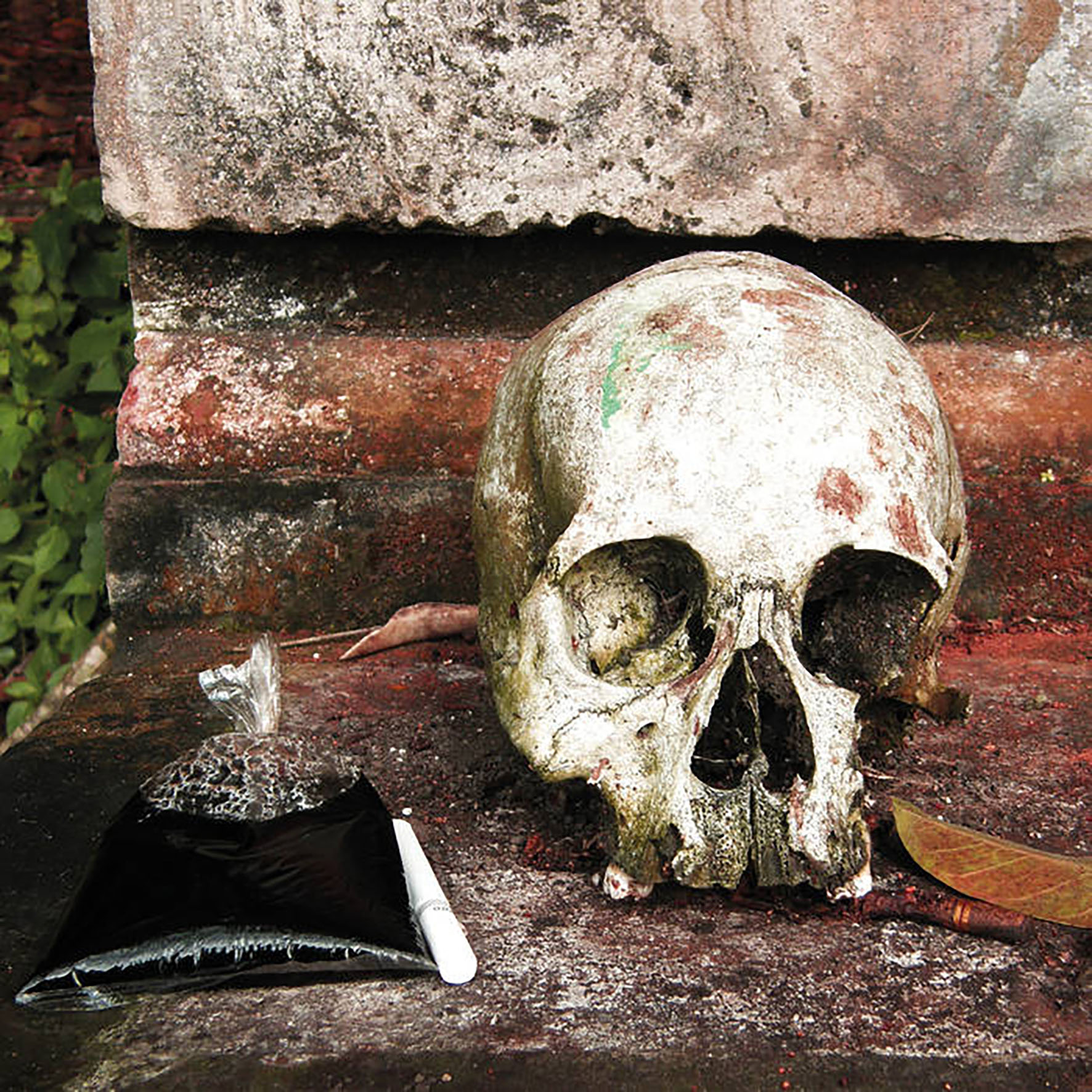 My fascination with the Sublime Frequencies and Nonesuch Explorer labels goes back many years, but it has been quite a long time since I have been properly floored by a revelatory feat of ethnological scavenging or scholarship. I was starting to worry that my ears had lost their capacity for wonder until this 2017 gem from France’s eclectic Akuphone label belatedly crossed my path. Unsurprisingly, the compiler (Vincenzo Della Ratta) previously surfaced on SF with 2016’s Kwangkay: Funerary Music Of The Dayak Benuaq Of Borneo and this album returns to a similar theme, swapping out the funeral music of Borneo for that of Bali. Only part of this album covers field recordings of Balinese funerals, however, as the other half is culled from some truly visceral and mesmerizing rehearsal space recordings of the more contemporary and visionary Dharma Shanti Orchestra. Both sides have certainly their appeal, but it is exclusively the Dharma Shanti material that makes the leap from "this is interesting and unique traditional music" to "this is what I desperately want the music of the future to sound like."
My fascination with the Sublime Frequencies and Nonesuch Explorer labels goes back many years, but it has been quite a long time since I have been properly floored by a revelatory feat of ethnological scavenging or scholarship. I was starting to worry that my ears had lost their capacity for wonder until this 2017 gem from France’s eclectic Akuphone label belatedly crossed my path. Unsurprisingly, the compiler (Vincenzo Della Ratta) previously surfaced on SF with 2016’s Kwangkay: Funerary Music Of The Dayak Benuaq Of Borneo and this album returns to a similar theme, swapping out the funeral music of Borneo for that of Bali. Only part of this album covers field recordings of Balinese funerals, however, as the other half is culled from some truly visceral and mesmerizing rehearsal space recordings of the more contemporary and visionary Dharma Shanti Orchestra. Both sides have certainly their appeal, but it is exclusively the Dharma Shanti material that makes the leap from "this is interesting and unique traditional music" to "this is what I desperately want the music of the future to sound like."
This album takes its name from the English translation of "gamelan beleganjur," which is the term for the processional gamelan orchestras common to government ceremonies, Balinese Hindu rituals, and (of course) war.I suspect that Balinese gamelan ensembles have not been inspiring glorious victories on the battlefield much in recent days, so that facet is absent from this collection, as The Gamelan of the Walking Warriors covers the more contemporary state of the form.In fact, that is exactly what interested Della Ratta in the project in the first place, as the bevy of traditional Indonesian gamelan albums available in the West predate the stylistic innovations and evolutions that have occurred over the last three decades.I am delighted to say that Della Ratta’s instincts were dead-on, as this album is quite unlike any other gamelan performance that I have heard.As he puts it himself, there is a more "melodious and meditative quality" that is "quite distinct from the spectacular and breathlessly frantic kreasi beleganjur that we are usually offered."I have no doubt that Della Ratta is right about that, but it does not quite convey the full appeal of these recordings: the reason that the Dharma Shanti recordings sound so revelatory is that they combine that entrancing melodic aesthetic with an impressive degree of sharpness and physicality.There is a violence and jaggedness to crashing, scraping cymbals and pounding drums that makes this a deliciously brutalist and ecstatic take on "meditative."
The opening "Pemungkah" is a perfect distillation of everything wonderful about these recordings, as it sounds like some kind of occult ritual of visceral, post-apocalyptic junkyard minimalism.The crux of the piece is a simple metallophone melody that hypnotically circles and loops, yet it stays compelling because its harmonic context languorously see-saws between two deeper sustained tones.It is weirdly beautiful in both its unhurried, trancelike repetition and its texture, which resembles a ramshackle collection of tin cans.The cymbals are what truly elevate the piece to a thing of genius though, as their scraping rhythm sounds like a roomful of people vigorously sharpening rusty knives in unison. That basic template repeats again and again for the four Dharma Shanti pieces, but the ensemble consistently manages to transform that hyperlimited palette into something wonderfully churning and organic through the ebb and flow of the pounding drums and slicing cymbals.
The second half of the album is a bit more varied and traditional, as Della Ratta recorded some actual ceremonies in the village of Peliang, unexpectedly trading the focused intensity of the first half for something considerably more shapeshifting and surreal.While some of the individual pieces are a bit too busy and cheery for my liking (resembling an out-of-tune music box that is playing too fast), they form a compelling and vivid whole,as the album stops being exclusively about the gamelan and becomes more of an impressionist tour of small village life.To some degree, the profound difference between the album's two halves makes it feel like two different albums have been bizarrely stitched together, yet that strange sequencing actually works in Walking Warriors' favor: I love the first half, but the aesthetic is probably too limited to sustain an entire album on its own without diminishing returns.
Amusingly, I first heard this album without knowing anything at all about its background or its participants and immediately assumed that it was the work of fringe-dwelling avant-garde iconoclasts like Alan Courtis or the Volcano The Bear milieu:it struck my ears as too radical and contemporary to be actual Indonesian gamelan music.Naturally, I felt like a cultural chauvinist jackass upon learning more about the album, but my error makes perverse sense, as Western experimental musicians have been appropriating ideas and themes from Eastern traditional music for so long that the distinctions between the two are not nearly as obvious as they once were.I guess I finally found the place where the mouth and tail of the Ouroboros meet.Aside from that, I was also struck by how much the aesthetic of the recordist and the quality of the recording impacts albums in this vein, as a tinny/naturalist "field recording" approach can make everything sound bloodlessly academic, while a more produced approach can turn vibrant performances into something that feels toothless and homogenized for Western consumption.To his credit, Dell Ratta managed to capture the Dharma Shanti Orchestra in a raw and explosively Albini-esque way that feels appropriately bracing and vital.The Gamelan of the Walking Warriors may not be a perfect and seamless collection, but the high points are wonderful enough to make that seem irrelevant.
Samples can be found here.
Read More
- Administrator
- Albums and Singles
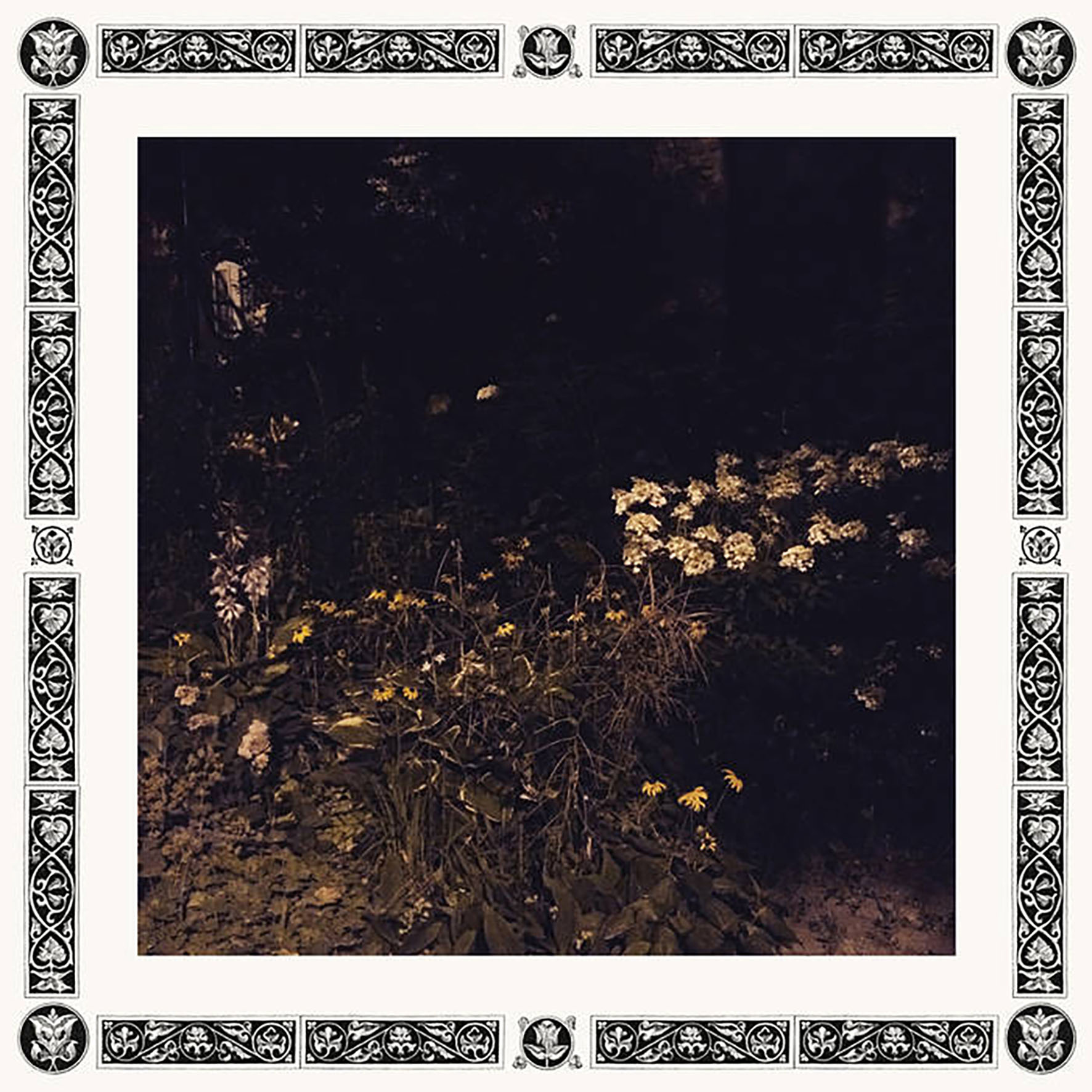 Sarah Davachi’s tireless campaign to subvert expectations with each fresh release shows no signs of slowing down, as the label-hopping composer's latest opus partially revisits her formative years as an aspiring pianist. While it would be fair to characterize Pale Bloom as "neo-classical" and a logical progression from 2018's Gave in Rest, Davachi has never been content with pastiche, reverent homage, or returning to previously covered territory. Instead, she seems like an artist increasingly unfixed in time, drawing from the past to give her forward-thinking experiments in harmonies and overtones a foundation that feels temporally ambiguous and self-assuredly independent of contemporary music trends. While there is not any particular piece on Pale Bloom that makes it tower above any of its predecessors, it is unquestionably a uniformly strong collection of new work that studiously avoids the familiar and hints at intriguing new directions to come.
Sarah Davachi’s tireless campaign to subvert expectations with each fresh release shows no signs of slowing down, as the label-hopping composer's latest opus partially revisits her formative years as an aspiring pianist. While it would be fair to characterize Pale Bloom as "neo-classical" and a logical progression from 2018's Gave in Rest, Davachi has never been content with pastiche, reverent homage, or returning to previously covered territory. Instead, she seems like an artist increasingly unfixed in time, drawing from the past to give her forward-thinking experiments in harmonies and overtones a foundation that feels temporally ambiguous and self-assuredly independent of contemporary music trends. While there is not any particular piece on Pale Bloom that makes it tower above any of its predecessors, it is unquestionably a uniformly strong collection of new work that studiously avoids the familiar and hints at intriguing new directions to come.
I sometimes feel like I bring up Erik Satie too much, as his work is an enticingly easy and effective reference point for simple, melodic piano miniatures.To be fair, however, he definitely cast quite a large and long-lasting shadow, as his style was accessibly anti-virtuosic and has aged extremely well.Consequently, it yielded a hell of a lot of descendants and it is hopeless to pretend otherwise.Davachi is not a particularly pure example of those spiritual children here, as the mood of the opening "Perfumes I" is a bit more elegiac and loosely structured than classic Satie fare, but she certainly shares the Parisian iconoclast's penchant for elegant simplicity, space, and unhurried languor.While that aesthetic is a fundamentally likable one, the true beauty of "Perfumes I" unexpectedly blossoms forth around its midpoint, as Davachi’s melancholy sonata plunges into considerably more compelling harmonic territory when backwards melodies start swelling and streaking through the piece.The two other parts of the "Perfumes" trilogy that follow are similarly grounded in a meditative, loosely structured procession of minor chords, yet each offers its own particular twist on that theme.The more ambitious and unexpected of the two is definitely "Perfumes II," as intertwining and overlapping classical vocals twist and float over the piece in a kind of sensual lament.It is a hauntingly melancholy piece, but the mood lightens a bit for the more modest third act, as the tender somberness of the piano is warmed by some rich organ drones.Sadly, Davachi did not have a third rabbit to unexpectedly pull out of her hat, but "Perfumes III" is quite lovely nonetheless, as the sustained organ tones blur together into some gorgeously shifting harmonies.
The album's second half continues that neo-classical bent, but takes it in quite a different direction, as the epic "If It Pleased Me To Appear To You Wrapped In This Drapery" is built from a shifting bed of sustained tones.It recalls some of the more experimental and abstract fare from Gave in Rest, but it is a considerably more expansive and sophisticated iteration of that aesthetic, as a slow-motion flow of differing timbres smears and bleeds together to yield a host of oscillations and uncomfortable dissonances.The album's description curiously mentions Eliane Radigue and La Monte Young as touchstones, which makes some sense given that "Drapery" is a longform minimalist drone piece.However, the overarching mood is a very far cry from the work of either, as Davachi uses a battery of strings and other instruments to weave something uniquely timeless, impressionistic, and uncomfortably queasy.The overall effect seems akin to experiencing a visionary glimpse of transcendence at a medieval mass, then having it quickly curdle into a sickly and nightmarish grotesquerie.As such, it is quite an interesting (if difficult) piece that is far darker than what I have grown to expect from Davachi.I suspect it is entirely possible that future occult historians will point to "Drapery" as the first hint that she had begun to fall prey to an unusually evil and tenacious bout of demonic possession.
Of Pale Bloom's four pieces, I am most fond of the comparatively modest "Perfumes I," as it is a masterfully understated triumph of elegant simplicity and ingenious symmetry.However, it is definitely the more ambitious "Perfumes II" and "Drapery" that make this album a memorably singular entry in Davachi's discography.While the latter could perhaps portend the dawning of a new phase of malevolent minimalism, it is the former that offers the most intriguing possibilities, particularly since Eduard Artemiev's score for Solaris is name-checked as one of the album's inspirations.I do not particularly see much overt similarity to that myself, though Pale Bloom certainly shares some of the actual film's sense of existential dread and ghostly unreality.That said, "Perfumes II" does seem like the kind of strange and striking work that an iconoclastic filmmaker might be drawn to (like Brady Corbet was to Scott Walker's ouevre), so it is quite possible that Davachi might have a bright future as a soundtrack auteur.Perhaps not though, as her career is increasingly characterized by restless flux and creative evolution.As such, it is difficult to imagine her staying in one place long enough for her vision to ever become a tightly defined and easily graspable one.Fortunately, the silver lining to that is that trend is a steady stream of inspired reinventions and bold stylistic experiments like this one.
Samples can be found here.
Read More
- Administrator
- Albums and Singles
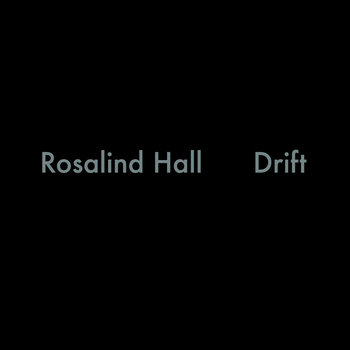
Drift is a free fall album consisting of three compositions invoking a sense of hovering expansion. Deeply spacious yet tightly compacted sound movements create holding patterns that slowly shift and evolve. Cycles fall in and out of sync while atmospheres envelop time, appearing on the periphery before being subsumed back into space.
The compositions utilize modified alto saxophone with spring reverb attachment, synthesizers, percussion, field recordings and electronic processing. The saxophone is played with an acoustic spring reverberation preparation to produce multiple feedback tones, pitch beating and metallic distortion. Using sampling and pitch shifting techniques, the instrument and its presence of breath act as the glue that binds the pieces.
Bio:
Rosalind Hall is an Australian musician and composer who creates performances, compositions, installations and soundtracks. Rosalind’s spatial and expansive work explores the physicality of sound through the use of amplification, microtonal movement, beating frequencies and reverberations. Using acoustic and electronic sound technologies such as modified saxophone, synthesizers, percussion, field recordings and processing software, Rosalind extends her sound sources by sampling and processing to create pieces that invoke a sense of claustrophobic infinity.
More information can be found here.
Read More
- Administrator
- Albums and Singles
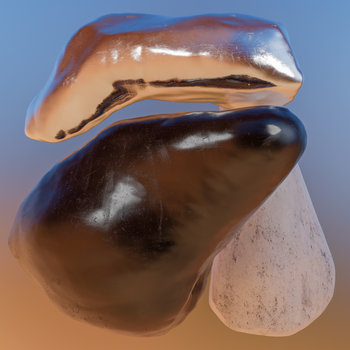
Luke Younger returns to PAN with an eight-track album of his most direct work to date. Composed alone at NO studio in the Essex countryside, to start an album with a piece called "Capital Crisis (New City Loop)" seems an intentional misnomer. Long, sustained periods in the rural studio setting see Younger working with an array of fragmented, disassociated sound sources to build upon 2015’s Olympic Mess. It shares a similarly inclined vision of the urban environment, but here Chemical Flowers makes reference to paradoxical notions of authenticity and creative practice by way of questioning the structures around us. Collages are assembled and dismantled, temporal and spatial boundaries fluctuate and movement is an overarching theme.
Surrealist drowned world atmospheres sculpted far enough away from the source of inspiration leave plenty of room for ambiguity. The nocturnal nature of the recording process is self-evident, and pieces like "Leave Them All Behind" tap into a deep psychedelic undercurrent.
Confused narratives, emotions and aleatory hallucinations ebb and flow throughout. "I Knew You Would Respond" evokes murky soundtrack terrain with eerie repetitive strings and ambient respite, disrupted periodically by brief bursts of granular noise. It's one of the records most unnerving moments, possibly as it's one of the most recognizably human.
The album navigates dense passages with recurring signifiers. Hollow percussion, modulating delay and curious field recordings come and go, maintaining a perpetual state of flux where nothing stays the same for long. The drowned world theatricals return on the swamp-like "Lizard in Fear" whilst string rhythms creep in on the penultimate track to incite momentary electroacoustic harmony. Floating synthesis slowly washes over and the title track unfolds - five minutes of reverb-laced portamento, visions of decay and Editions EG influenced world-building. Movement is key.
Releases May 17, 2019. More information can be found here.
Read More
- Administrator
- Albums and Singles
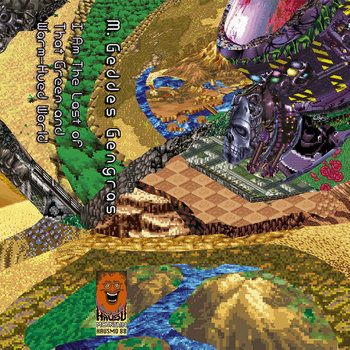
Over the last decade, M. Geddes Gengras has released an enormous catalog of wide-ranging, synth-focused music in both solo and collaborative settings. He has participated in influential experimental groups like Sun Araw, Pocahaunted, Robedoor, and Akron/Family. Along with Sun Araw's Cameron Stallones and Alex Gray, and a host of Jamaican singers and artists, Gengras continues to blur the boundaries of dub and electronic music under the name Duppy Gun – a project which crystallized with an acclaimed collaboration called Icon Give Thank (RVNG, 2012) with roots reggae legends The Congos.
I Am The Last of That Green and Warm-Hued World, Gengras’s first release with Hausu Mountain, follows in the more ambient- and drone-focused vein of his work, as explored on recent releases with labels like Leaving Records, Umor Rex, and Room40. The album stretches through an 80-minute program of layered synth mosaics and expanses of serene drift that continually shift and reconfigure themselves into networks of interlaced harmonies and electronic textures. At any given moment, huge foundations of low-end drift swirl beneath angelic pads and soaring, quasi-melodic leads, as layers of environmental foley drip into view around the margins. Synth tones evoke the timbres of human vocal formants, stuttering digital glitch, or unidentifiable hand drum percussion. Mixing disparate sounds and moods in his palette, Gengras paints a mental journey through diverse emotional zones: quiet meditation under the desert sun at noon, ego-destroying tidal wave swells slamming onto the beach, confused wandering through hostile territory under the cover of night.
I Am The Last of That Green and Warm-Hued World came into existence after M. Geddes Gengras's father appeared to him in a dream and suggested that he read Stephen King’s The Dark Tower: The Gunslinger. The vivid, post-apocalyptic locales visited in the book, which range from mountain ranges to atomic water pumping stations to interdimensional portals, directly inform the auditory spaces that Gengras draws into life with this album. While ambient music often reaches the listener with a host of external signifiers meant to ground the music in some semblance of the physical world (see: oceanic album art, song titles that evoke specific images), Gengras’s music achieves a rare degree of topographical intricacy by virtue of his wide, dense mixes and the contrasting textures presented by his interlocking tiers of synthesis. Over the course of five extended sessions that range from 11 to 22 minutes each, the album sinks into passages of near-complete stasis and crests into segments animated by intermittent bursts of melody and muted, techno-adjacent drum tones, settling into discrete atmospheres that percolate at different degrees of rhythmic complexity. All the while, M. Geddes Gengras allows individual elements to generatively interact and twist around each other to the point that no two moments present the same exact sounds. A far cry from willfully repetitive, loop-based ambient music, I Am The Last of That Green and Warm-Hued World extends before the listener as a fluctuating, self-contained biome, with the components of each composition carefully stacked together and charged with their own trajectory through time and imagined physical space.
More information can be round here.
Read More
- Administrator
- Albums and Singles
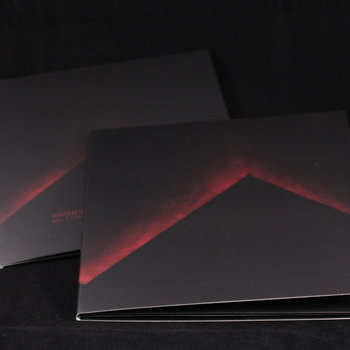
Live trio collaboration:
Dirk Serries - guitar
Eric Quach - guitar
Tom Malmendier - drums
This is an improvisational set by three musicians who came together at Christuskirche Bochum. The result is a 41-minute-long track with an epic structure of drone, noise, ambient, experimental sounds and freejazz elements.
More information can be found here.
Read More
- Administrator
- Albums and Singles

Reynols started in 1993 in Buenos Aires and is famous amongst many things for its unique Down's syndrome drummer/vocalist Miguel Tomasín, who is the band's spiritual architect. Reynols is also known for its musical diversity, which spans everything from cosmic free-rock and lo-fi drone electronic music, to conceptual sound art and social/political/esoteric observations. The world of Reynols is a universe completely of its own, and inhabits so much that even an extensive box like this only scratches the surface.
Although Reynols have worked with an open-process DIY philosophy and been the subject of multiple documentaries, the band has still managed to sustain an element of mystery, so the release of Minecxio Emanations 1993-2018 marks the first time the band has allowed an extensive overview of their work to be made. Fans of the band will also be happy to learn that most of the material is previously unreleased, including two albums from the early 2000s that were completed but never issued; the earliest recordings from 1993; collaborations with artists Acid Mother's Temple and Pauline Oliveros; conceptual pieces; and more. There's also a DVD with 90 minutes of videos.
This boxed set shows the full range of Reynols. It has been six years in the making and is the most extensive boxed set project ever to be released by Pica Disk.
Read More


